Seven Easy Tips for Mixing Decorating Styles in a Room
Inside: Mixing decorating styles can make a room more attractive, interesting, and inviting but knowing how to do it right can be confusing. Here are seven easy tips for how to mix decor styles with confidence! ➡
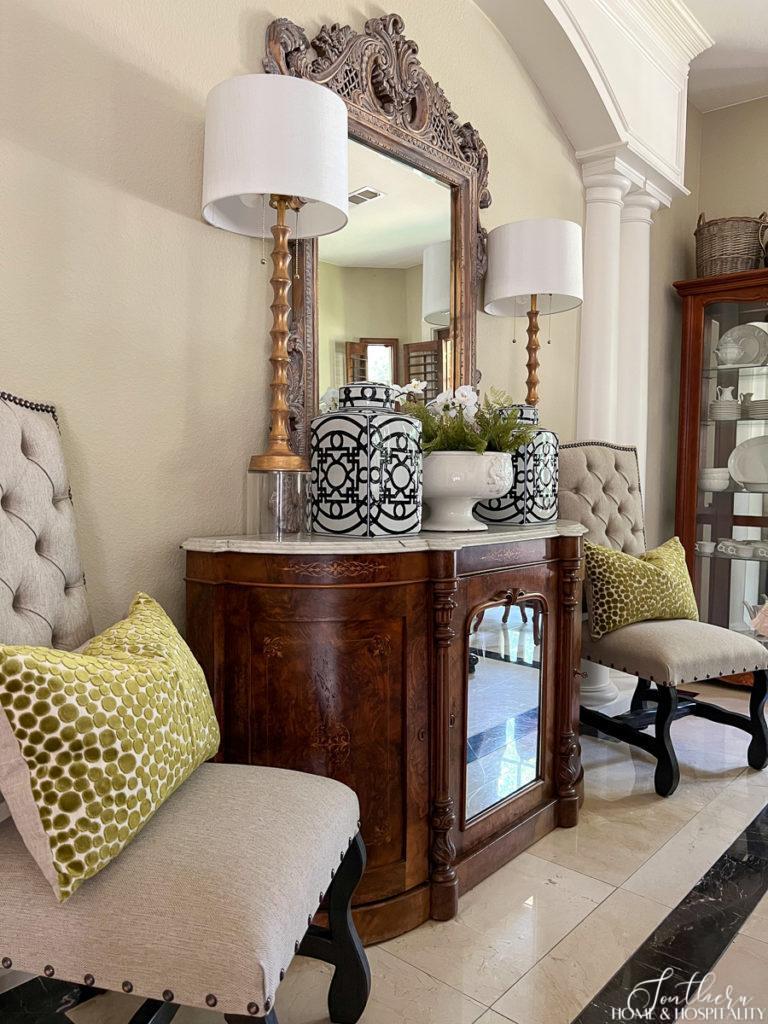
Have you ever noticed how rooms decorated by professional designers always include pieces of furniture or accessories that are unique or different from each other?
That’s because mixing different decorating styles in a space really ups its visual appeal. It’s what gives the room its character and depth.
Mixing it up keeps your home from being one-note and boring.🥱
And the best news?
We don’t have to ditch everything we own every time a trend goes out of style.
But mixing different design styles in a room needs to be done the right way or you just end up with a strange mish-mash of stuff.
Following these seven simple tips will make your room look curated, interesting, and intentional (and less like a chaotic storage closet).
This post contains Amazon and other affiliate links for your convenience. As an Amazon Associate I earn from qualifying purchases. If you purchase something through any link, I may receive a small commission, at no extra charge to you. I only recommend products that I love or would purchase for myself. See my full disclosure here.
Why we need to know how to mix furniture styles.
There are lots of reasons why we need to know how to mix different decorating styles together. For instance:
- We inherit or are gifted some great furnishings that don’t match our home.
- We need to blend furniture together after a new marriage.
- Our spouse’s preferences are much different than ours (it’s not nice to make your hubby feel like he’s living in someone else’s house).
- And we all have to deal with our changing tastes, and the constant outdating of our decor with new trends.
Should I really mix design styles in a room?
Not only is mixing decorating styles okay, you absolutely should! This is a trick in interior decorating in design elements 101 that professional designers always use to give a space interest.
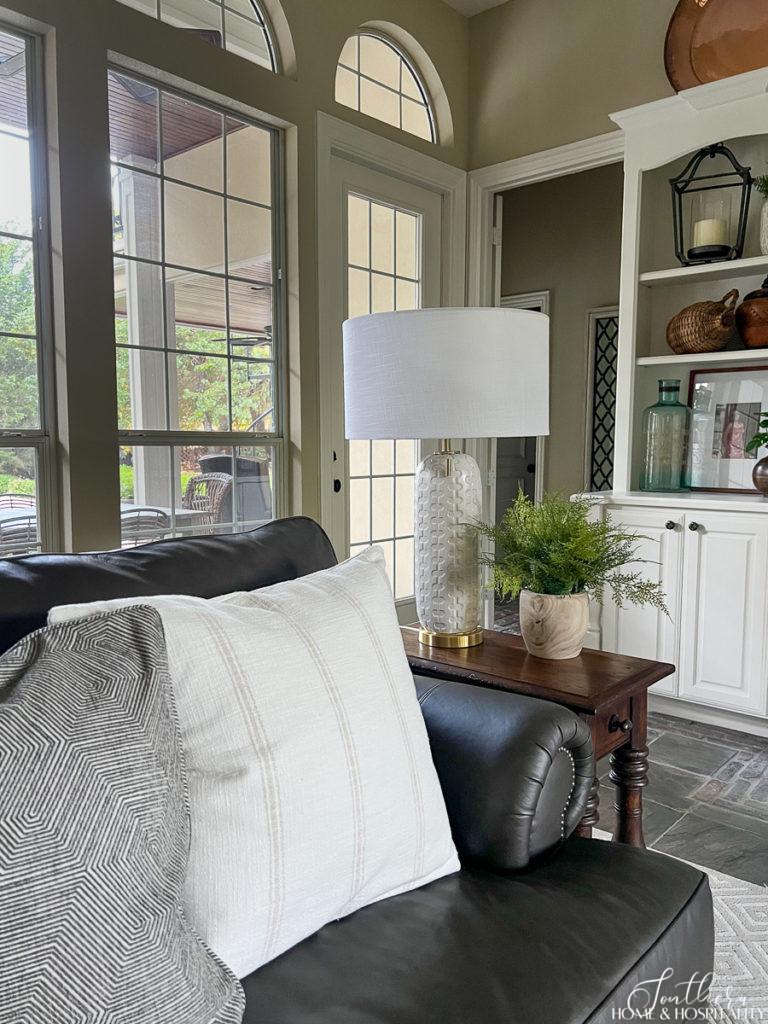
Here’s why mixing home decor styles is your decorating friend (and not mixing it up is your foe):
- A room where every single thing belongs to the same style becomes “theme-y” and devoid of personality.
- Completely vintage rooms belong in a museum or antique store (I can smell the mustiness now).
- Totally trendy rooms appear that you purchased everything at the same time at the same store and lack any soul – definitely not an interesting, curated look.
- Being matchy-matchy has very much fallen out of favor and people want to infuse their personality into their surroundings.
- Traditional style decor (like mine) is associated with being older, so mixing in newer style pieces is a great way to keep the room fresh. Traditional furniture and accessories also tend to be ornate, so this offsets the busyness with the more simplistic clean lines of a different style.
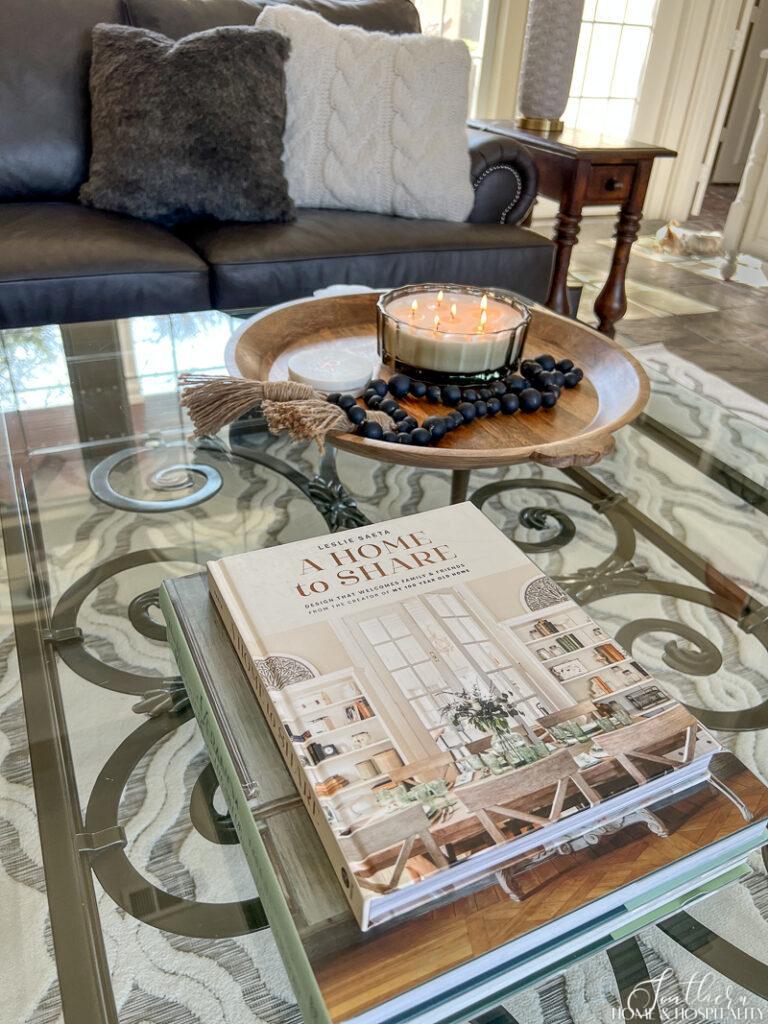
- A plus of adding traditional pieces to nontraditional styles is that in a few years, your room doesn’t scream what decade it was redecorated in – because those traditional items never go out of style.
- Decorating becomes more affordable if you mix styles a bit since trends tend to change every five or so years. This avoids the need to start from scratch and repurchase everything all at once.
- An eclectic style of decorating becomes more popular every year. Because it allows homeowners to mix old pieces with new. More expensive and high-end with cheaper items. Familiar traditional with cool, hip clean, and contemporary.
- And one more bonus? If done correctly, it can make your entire home feel “professionally” decorated!
How to mix decorating styles.
The 80/20 Rule of Decorating.
Keep the ratio of your main style to a different style to roughly an 80/20 ratio.
This first one is a very simple formula and it works for EVERY design style.
Decide what your decorating style is. Is it traditional, transitional, farmhouse, boho, coastal, modern, or something else?
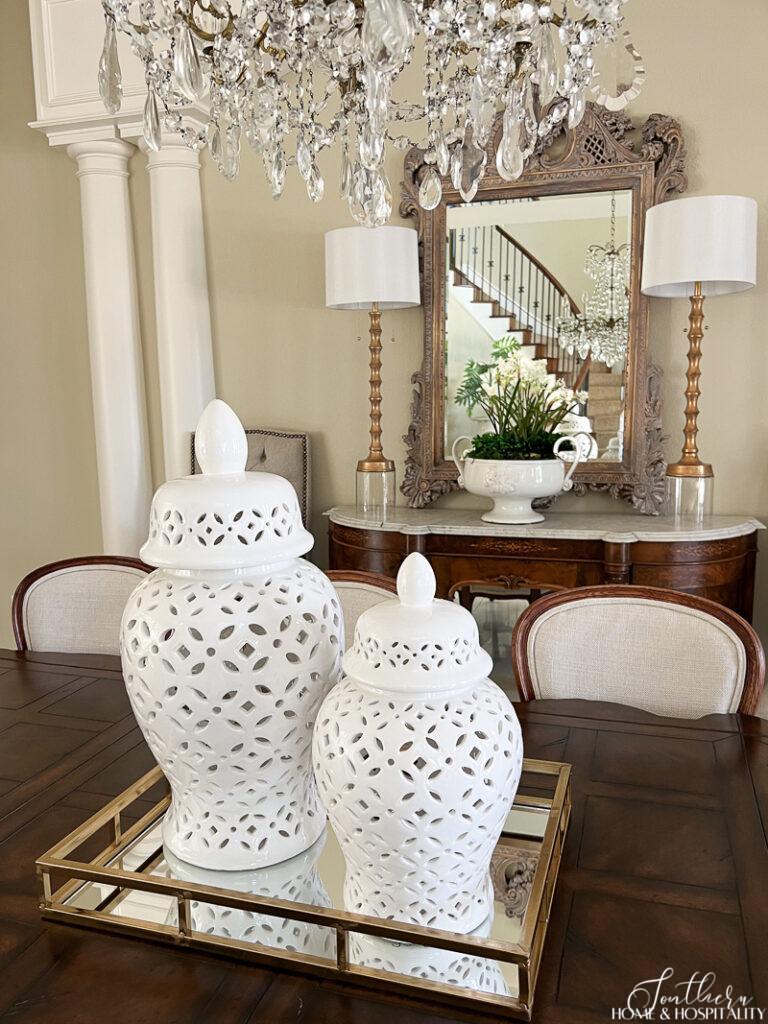
After you’ve zeroed in on what your favorite or main style is, have that style comprise 80 percent of the room. Items in this main style should include your most expensive and large pieces of furniture, and most of your accessories, wall art, and rugs.
Then take your next favorite style and have that be your other 20 percent in the rest of the room. Simple as that!
So for example, if your style is traditional like mine, you might add something unexpected like lucite furniture or geometric accessories. If your entire room is contemporary style, add a vintage piece or two with an interesting accessory or an antique desk.
You can even incorporate a third complementary style by adjusting your ratio slightly to make room for it, say 70/30. Your main style is still the majority and the other two make up the other 30 percent.
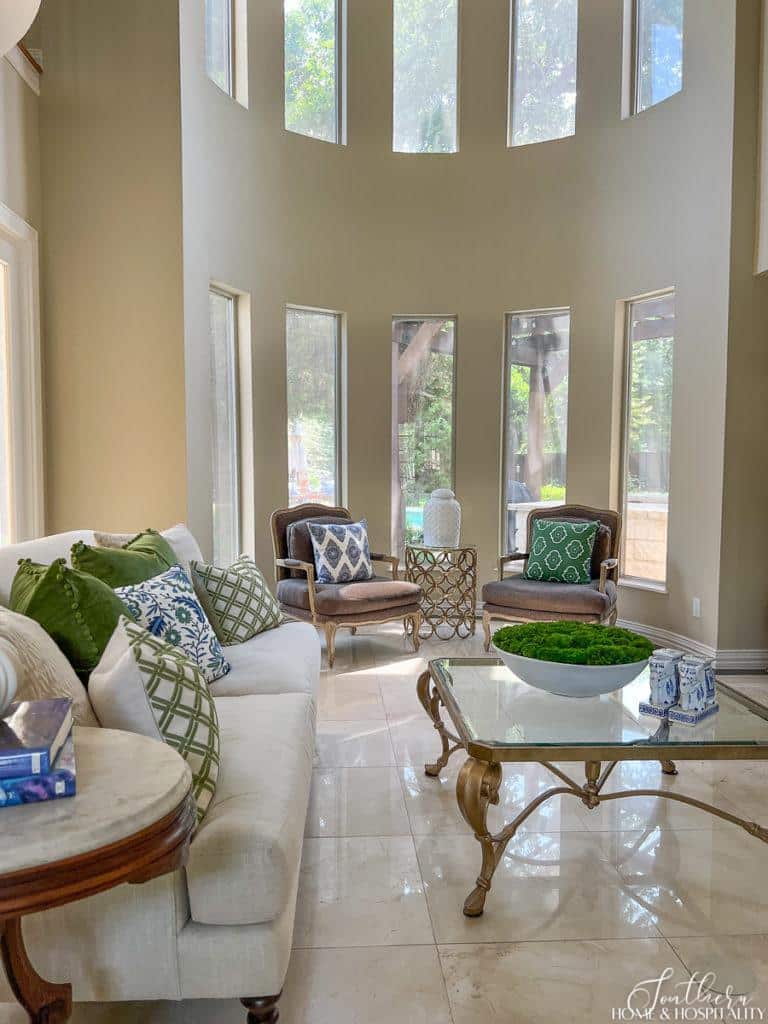
My style in my living room is traditional with touches of French and a dash of modern. So you can see about 70 percent falls in the classic/traditional style. And I’ve sprinkled in the French I love for a little more character. The clean contemporary items like the accent table, DIY moss bowl, and pillow fabric patterns freshen it up and keep it interesting.
Give each piece at least one buddy.
Ever heard of the buddy system in decorating? Successful mixing of decorating styles requires items to complement each other.
In order to do this, every piece of furniture, accessory, wood tone, and metal color should have at least one buddy who they have something in common with. A color, style, finish, or texture. This helps give the room a cohesive look and makes decorating feel intentional.
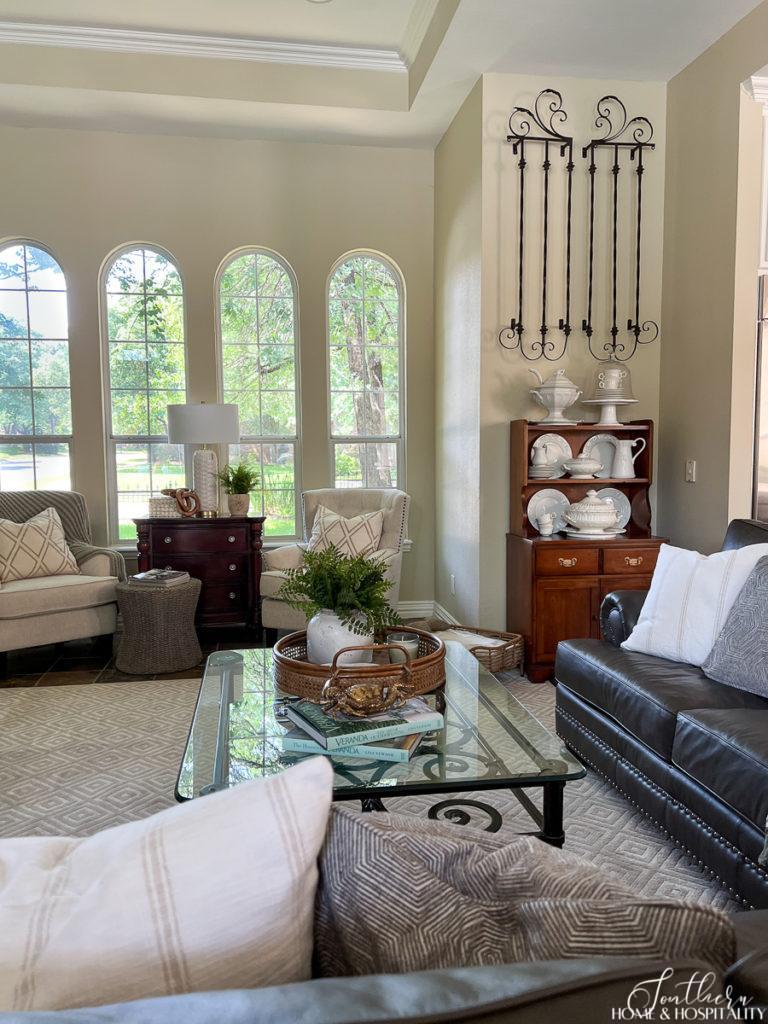
For instance, in my family room there three dark wood furniture pieces that are buddies in wood tones. The modern-style lamps and a modern geometric area rug are style buddies. The rug and the geometric print throw pillows are pattern buddies. And the ivory pillows around the room, the rug, and the accent chairs are color buddies.
Keep your buddies in balance.
After you’ve made sure everything has at least one buddy, you’ll need to place them so that the room is visually balanced. This allows the eye to scan the room and to find it pleasing and interesting because everything doesn’t match, not the opposite.
Simply evenly distribute items around the room according to their characteristics: color, texture, pattern, and size.
My dark wood end table is on the opposite side of the room from the dark wood chest. The dark sofa sits on a light-colored rug. The modern lamps sit on traditional wood furniture. The geometric patterns on the pillows and rug are spread out all over the room.
It’s all about balance to make a room flow and feel “right”.
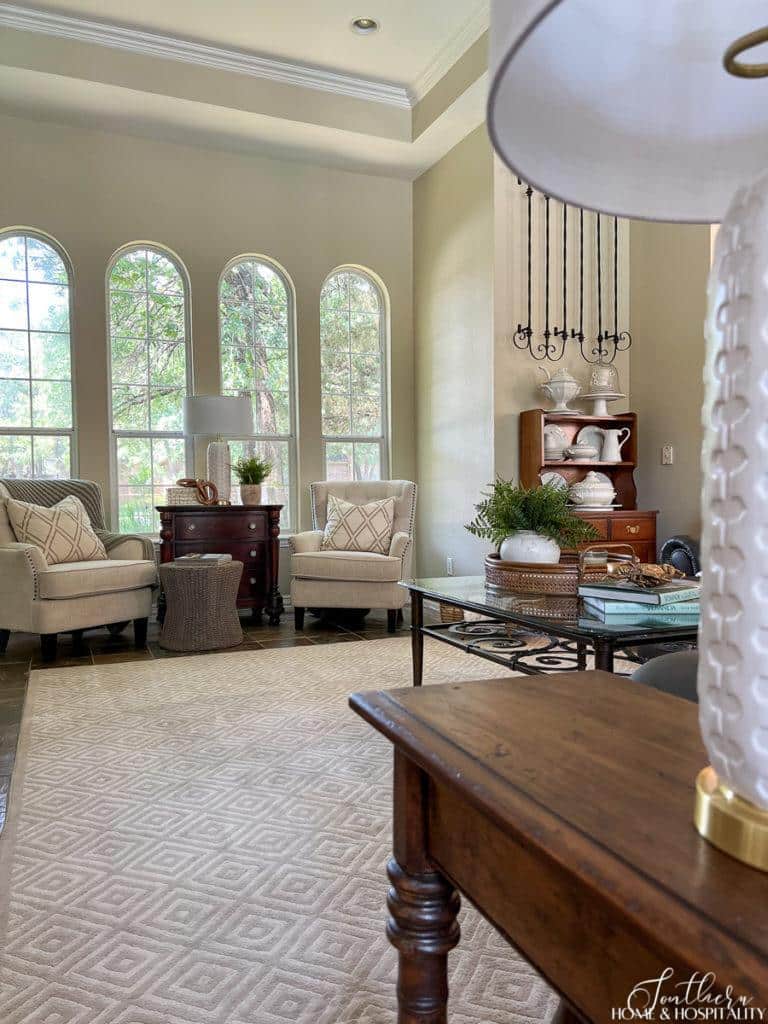
Try making the odd man out the focal point.
Sometimes you have one piece whether it be furniture, wall art, or an accessory that just doesn’t fit. Don’t try to camouflage it, but flaunt it! If you love it, try making it a focal point and treat these pieces like art in your room.
Make sure they are special because they will stand out. Have them look intentional by adding accessories that have something in common with the odd piece besides its style, like color or shape. (Even the lone wolf needs a friend).
Use a limited color palette.
Using only three or four colors in a room helps make the space look pulled together and planned. The visual interest will come largely from the varying styles. A barrage of different colors creates visual chaos – a neutral color scheme won’t compete for that attention.
Keeping the colors you use in neutral tones helps to highlight the special things about the different styles that are in the room.
And the tighter the color palette the farther apart on the decorating style map you can stretch!
The easiest way for a nonprofessional decorator to mix styles successfully is by starting with a neutral wall color or white walls.
Every room needs a vintage piece.
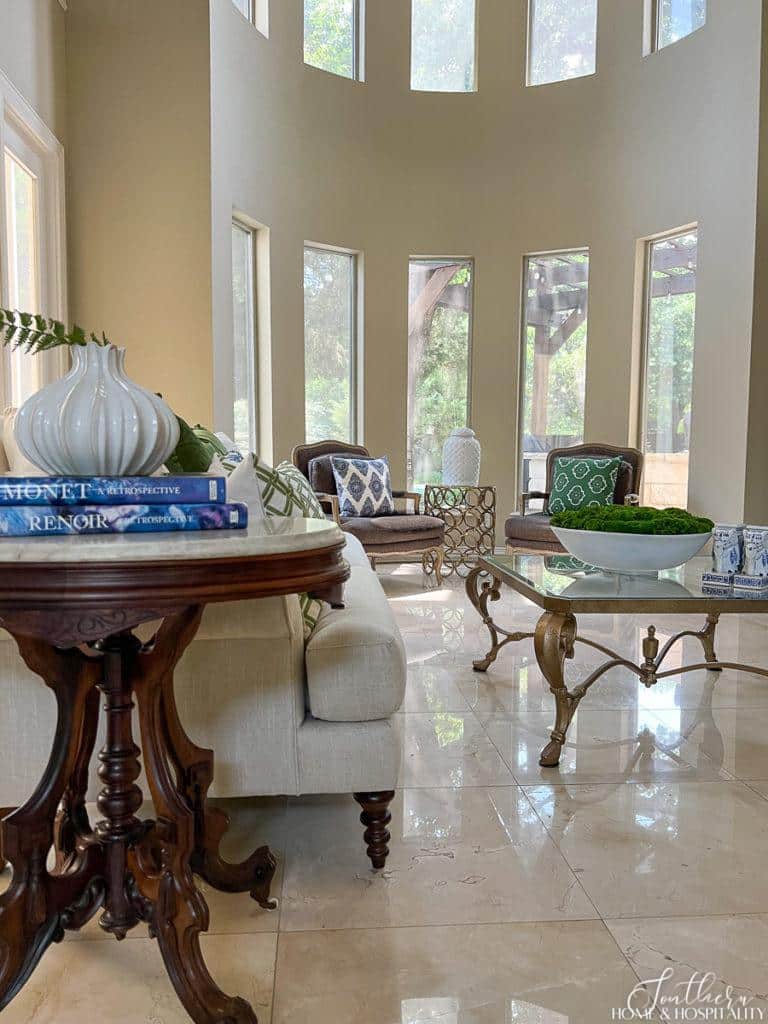
A piece of furniture or decor accent that has some history really adds personality and fits in any style room, even the sleekest contemporary space. Vintage decor comes in all sorts of styles – traditional, art deco, mid-century modern, etc. so there is one out there that will complement your style.
And of course, in my personal opinion, every room benefits from a French piece, like a classic French chair or mirror.
Every room also needs a few current pieces.
Adding a few current accents will help make any mix of design styles look fresh and updated. If you only add the hot trends with a few of its accessories, you won’t have to replace that much when they go out of style.
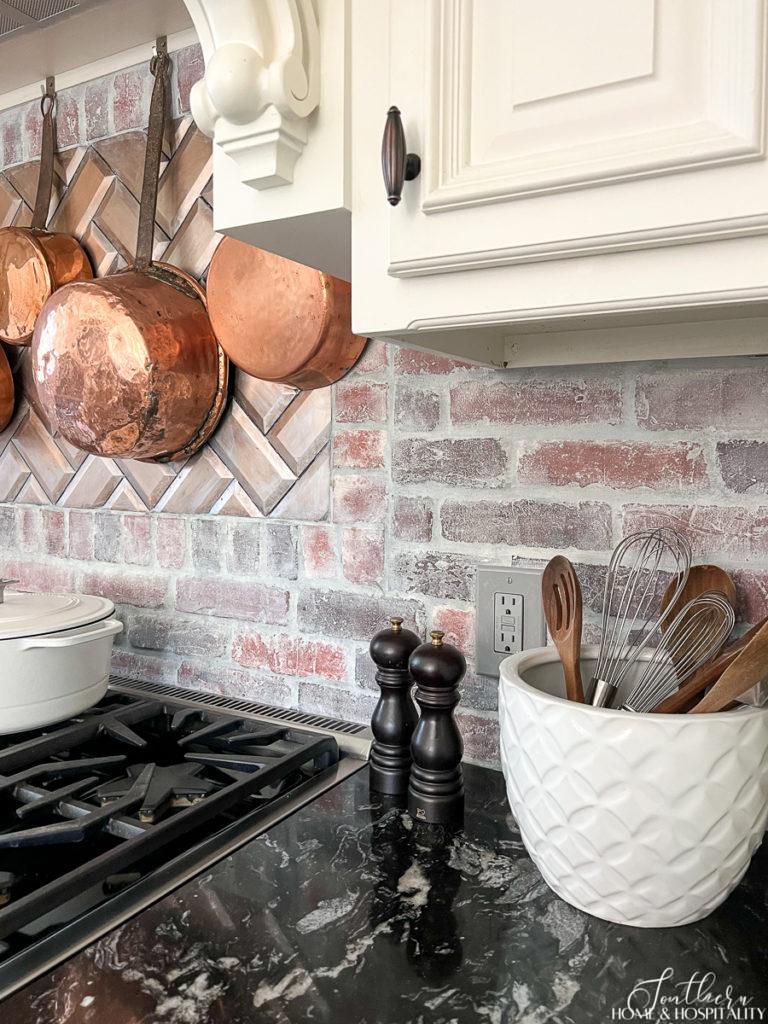
FAQ’s for mixing decorating styles.
Can you mix wood colors in a room?
Yes, you absolutely can! Gone are the days of matched sets of furniture for the living room, complete dining sets, and bedroom suites. A room where every piece of wood furniture was stained the same color would be boring anyway, wouldn’t it?
A tip for arranging wood furniture that has a large contrast in color, say dark and light, is to place them further apart in the room.
Can I mix metals in my house?
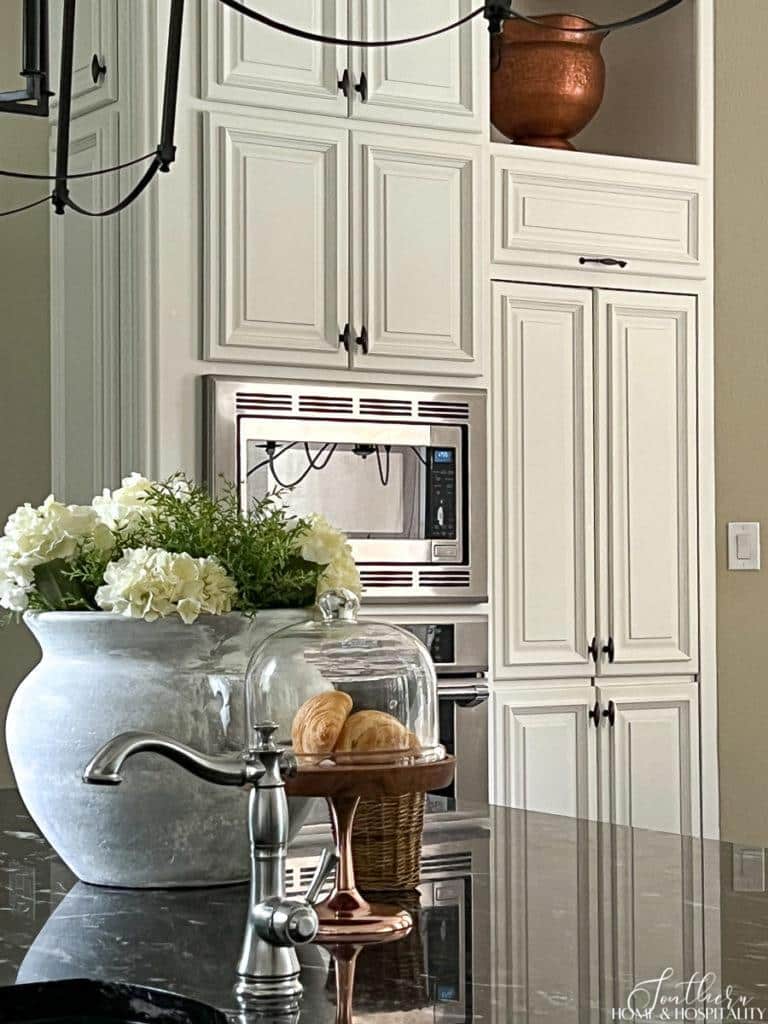
Yep! Having all of the metal colors in a room match is also an outdated decorating rule. Choose one primary metal and then one or two in a different color and texture to complete the look.
When we remodeled the kitchen, I used dark iron colored cabinet hardware and light fixtures, but mixed it with brushed chrome faucets. Try to have at least one other item share the same color as that second or third color (another use of the buddy system).
How can I break up old matching furniture sets?
Try mixing the furniture into different rooms. Nightstands can be used as end tables in a sitting area. Dressers can be used as a buffet in the dining room. Use the dresser mirror somewhere else or remove it altogether. Replace or paint your matching dining chairs. Or even mix up the chairs further by adding different host chairs. Paint is always an easy option to add variety to matching furniture.
Want more easy tips to make your room have balance and flow? Check out “Where Do I Put the Furniture in a Room? Basics for Placing and Spacing“.
No matter the decorating style, we are truly already mixing looks because most of today’s interior design styles have evolved from a combination of other styles.
On top of that, most of us are not decorating all from one store or catalog. Maybe we are intentionally mixing styles.
So give your own home a style mixing checkup with these easy tips to enjoy rooms that are so much more interesting. And uniquely you.

Before you go:
As always, I appreciate your visit, comments, and shares here on the blog! I’d love it if you also follow along with me on Pinterest, Instagram, and Facebook so you won’t miss any of my inspiration and ideas.
Don’t forget to sign up for updates to keep in touch.
If you’re not already a member of the SH&H family, I’d love to have you join me! You’ll not only get email updates, but you’ll have exclusive access to all the bonus materials in my free subscriber-only library, like this:
Pin it to remember it!
If you’ve enjoyed this post, please pin and share this on Pinterest:
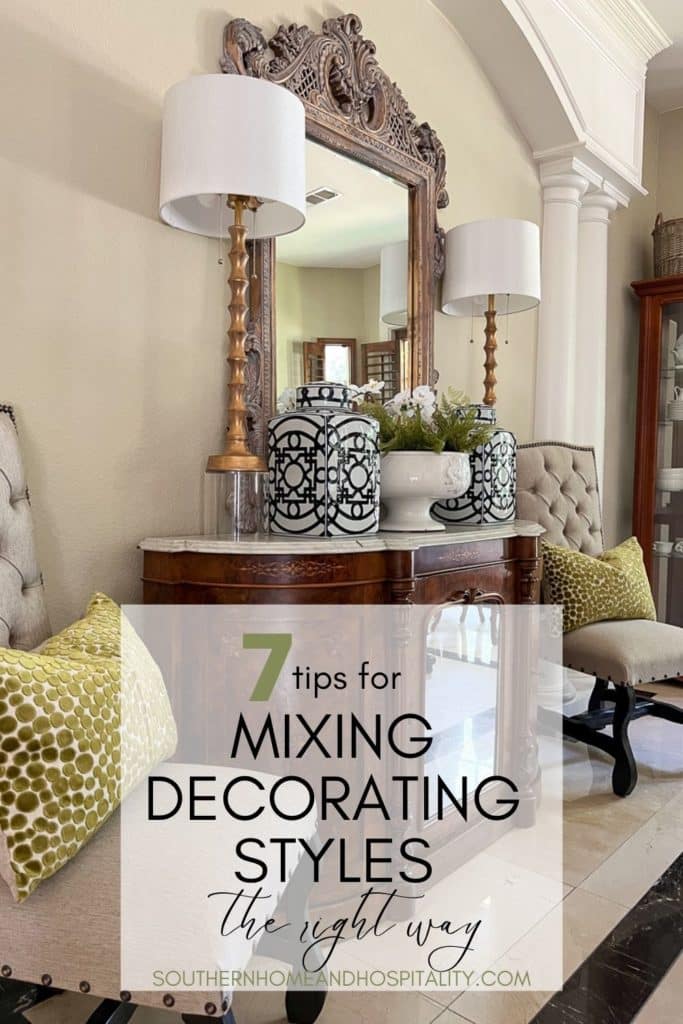


Hi Kate, this article is great! Thank you so much. It took me years to learn these principles separately and here they are in one article.
Thanks for sharing your decorating ideas love them 🙏🥰
Thank you Annette!
Our home seems to have evolved into a somewhat an eclectic style with pieces from my grandparents, parents and when we lived in Africa as well as up cycled bits and pieces which I have made. Love your posts on mixing and matching and realise I am not so strange after all! Just do what makes you happy and enjoy your home. Perth, Western Australia.
Well howdy from the other side of the globe Heather! I’m so glad you identified with this post and it sounds like we both love our mixed style!! The things I’ve inherited and collected over the years make me so much happier than any generic item I could buy at a store that will be gone in five years.
Fantastic, informative read!
Thanks so much Merle!!
I recently remodeled/redecorated my French Normandy home with antiques, traditional and even modern pieces. Completely rewallpapered my rooms, used fav pinks, teals, greens and whites…..and ended up with a French/English cottage GLAM Coastal look. My Hearth kitchen has handcrafted teal mermaid tail backsplash, blush velvet stools/chairs and an oversized teal floral sofa, and I get raves, entertain much more now.
That sounds absolutely fabulous Irene!!!
As my BFF said, I go home to a sanctuary every day. Yes, yes, I do.
Tha’s what makes it a home, right Irene? It’s our happy and safe place.😊
I have loved reading your article this afternoon. In fact, I plan to study the content further. This addresses my concerns at this very moment! I need help and you were speaking to me. We are soon moving to a beautiful house built about twenty years ago. My reproduction eighteenth century furniture fits very well, but I need to get away from the old look. The living area has a gorgeous antique French mantel. Floor length gold, silk draperies are at all three windows. The wall is clay colored and the floors are medium brown hardwood. Suiting my husband is a goal. The older he gets, the more he has an opinion. Fortunately, we have similar tastes. It just takes him more time to decide to spend money or make big changes, like painting the interior brick in the old house. My sofa is a small camelback, upholstered in a linen print. It’s a pretty print with a tangerine background. The other colors in the print are white, khaki, two shades of green and a light blue. The sofa is floating, but the background color is still bothering me when the wall is a different orange. I could go on, but I just want to make some decisions and you have helped me. Thanks.
Hi Mary, I’m so glad this post helps you wrap your head around what you want to do with your beautiful new home. It sounds like it will be a decorating project you’ll enjoy!!
Greetings Kate,
I truly enjoyed reading your timeless decorating article that inspires fresh creativity to those of us faced with homescape voyages that require navigation through swift-running “trend” waters. Your aesthetic methods serve as a compass to the first-time decorator on up to veterans of many change-up campaigns. I am one of those veterans that appreciates being able to retain and re-invent placement of collected, period-pieces amongst new supplements; relieved to not have to scrap everything! Best of all it will be fun and comforting to be able to enjoy their intrinsic beauty, staged anew, through your suggested updates in color, media-mix and balance. It will be gratifying to achieve visible results that will not have surrendered to trend, but will have commandeered it by methods you prescribe.
Thank you for your fine idea and photo presentations.
Sincerely,
DMcD
Marlboro Country/ NJ
I’m so glad you enjoyed the post and that it resonated with you! Those of us that have decorated for a long time really DO enjoy reinventing what we have and using it in a fresh way!!